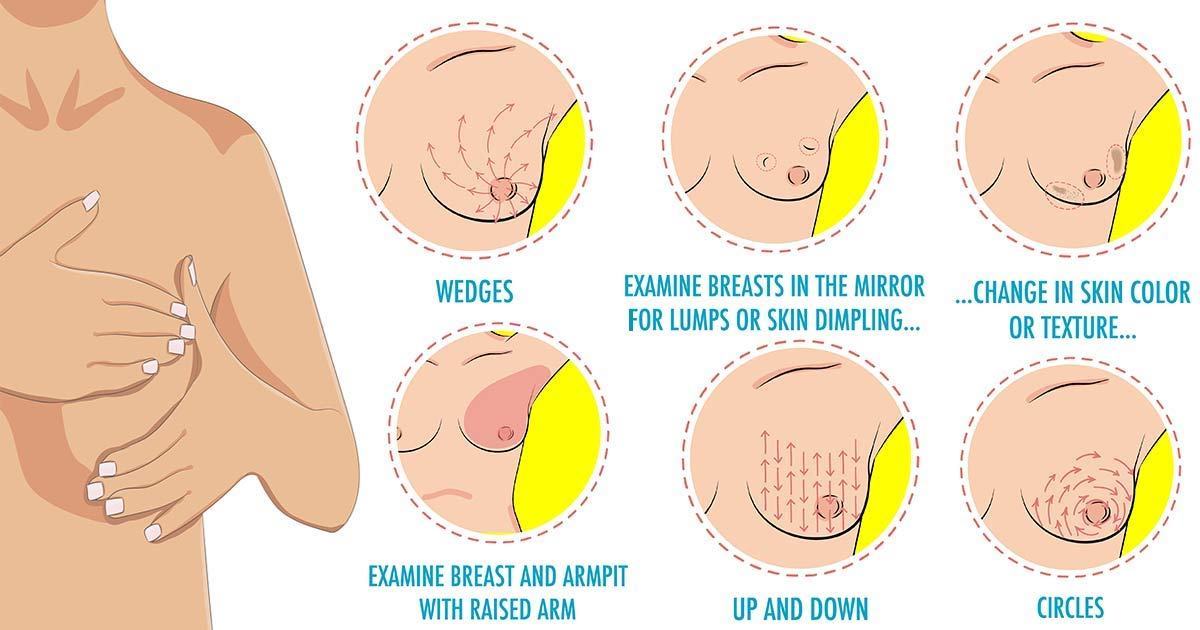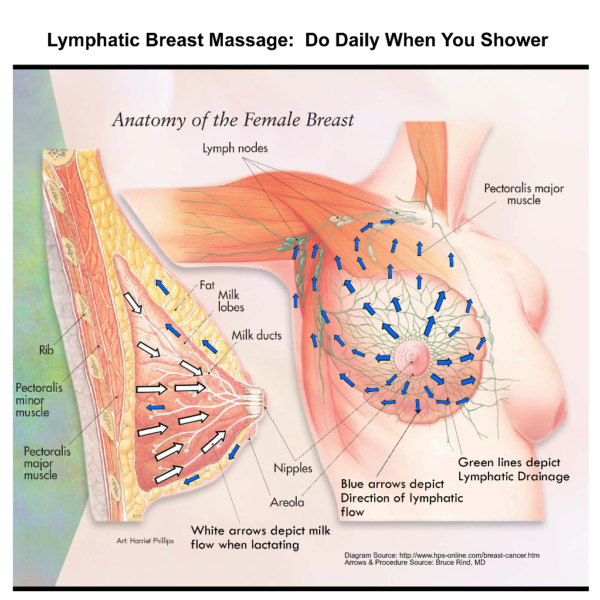There’s no doubt that infertility is a rising problem in today’s society. The CDC finds that about 10 percent of women (6.1 million) in the U.S. ages 15-44 struggle to get pregnant or stay pregnant – and, based on what we see, we would argue the percentage is likely even higher. The reasons are many (and we may never know all of them), but what we do know is that it causes a great deal of added stress on those it affects – physically, emotionally, spiritually, AND financially.
(In fact, when we tried to find accurate info on how much is spent annually on infertility treatments, we kept getting results for ways to finance treatments for infertility.)
The good news is that, in many cases, the body can reverse infertility naturally if given the correct resources.
Getting to the root of infertility
According to the CDC, the term “infertile” is usually applied to a woman who is unable to become pregnant after a year of trying (or 6 months for a woman over 35).
Infertility, like any dis-ease, is simply a sign that something is not right inside the body and needs support. It isn’t a deficiency in fertility drugs or due to a lack of IVF. Fertility is a natural process in the body, but one that the body can turn off if it doesn’t feel it can safely sustain a pregnancy.
Many of us ourselves or know friends who have struggled to conceive and we’ve all witnessed how painful it is to want to have a child and struggle to get pregnant. Thankfully, in almost every case we see, women are eventually able to conceive by focusing on supporting the body with proper diet, supplements, and lifestyle.
There are so many confounding factors that can cause or contribute to infertility, which is why conventional treatment can vary so much in effectiveness — it simply can’t address all the possible causes unique to the individual.
Fertility drugs and artificial hormones of any kind, including birth control, can make the symptoms seem better, but can make the underlying causes even worse and make future fertility more difficult. Hormonal birth control is often prescribed for various hormonal imbalances and their symptoms… but artificial hormones on top of existing hormone problems does NOT make for longterm success.
What Causes Infertility in the First Place?
Infertility can be caused by a huge number of factors: hormone imbalance, Polycystic Ovary Syndrome (PCOS), endometriosis, anovulatory cycles, physical blockage, inadequate hormone production, short luteal phase, lack of luteinizing hormone, high levels of prolactin, and many others.
Poor nutrition often plays a major role, as does exposure to certain chemicals. Age plays less of a role before menopause than was originally thought. While there are many wonderful naturally minded fertility specialists out there, only certain doctors know how to test for and address any of these possible underlying issues. Extreme fertility treatments do work for some, but can be very emotionally and physically exhausting, not to mention very expensive.
The great news is that dietary and lifestyle changes can make a tremendous difference in fertility, and often help with other issues like excess weight, lack of energy, blood sugar problems, skin issues, and insomnia in the process. Even those who choose to undergo conventional fertility treatments can help improve their chance of working by supporting their bodies in natural ways as well.[/vc_column_text]
[vc_column_text]
How to Reverse Infertility (and Get Pregnant)
This is a simplified overview of the individualized protocols we use when working with women on fertility, but it is also very useful for helping with other hormone issues such as PMS, cramping, fatigue, heavy periods, and other hormone-related problems. It is designed to address all issues that can contribute to infertility aside from a physical inability to conceive.
Dig deep, then zoom out
Step 1: Cycle Mapping
BETTER TESTING MAKES FOR BETTER TREATMENT
When treating women appropriately and effectively with irregular cycles, fertility problems, or who have had an ablation can be challenging because it is difficult to fully ascertain what their hormones are doing and when.
Here at Kingdom, our providers use the DUTCH Cycle MappingTM test, a complete picture of a cycle in graph format that allows for a more accurate and comprehensive treatment program specific to our patient’s situation. We can understand if and when a patient is ovulating, as well as determine why patients are having mid-cycle spotting or hormonal migraines. It helps us get a clear understanding of how our patients’ ovaries are functioning or look further into fertility issues.These answers help us in our goal of individualized, specific medicine!
Step 2: Nutrition & Gut Health
In modern times, many people are undernourished, despite being overweight. The body simply will not allow conception to occur or a pregnancy to continue if it doesn’t have the basic foundation it needs to sustain a pregnancy.
At our office, nutrition is VERY individual to each person, their lifestyle, and current needs. Which is why, oftentimes, it calls for in-depth lab work to see what nutrient deficiencies may be present, food sensitivities that may be causing chronic inflammation, as well as bacteria overgrowths, parasites, or viruses that could be disrupting the patient’s internal ecosystem.
Some basic nutritional ways to help optimize fertility that may or may not be great for you personally, but generally help:
- Remove processed grains, other processed foods, sugars, and starches from the diet.
- Obtain more nutrient-dense carbohydrates from vegetables, some fruits, and starchy sources like sweet potatoes and squash.
- Increase healthy fats in the diet especially from sources like coconuts, coconut oil, olives and olive oil, butter, grass-fed meats, eggs, avocado, and nuts.
- Get enough protein especially from grass-fed meats, wild fish, pasture eggs, and nuts. This is also important during pregnancy as adequate protein can help minimize the risk of certain pregnancy complications.
- Eat a lot of vegetables, especially green leafy varieties like lettuce, spinach, broccoli, cauliflower, kale, collard, chard, cabbage, Brussels sprouts, and similar veggies.
- Drink enough water. Hydration is important for so many functions within the body, including fertility.
- Get insulin levels under control. Even if you don’t have Type II diabetes, a high carbohydrate diet often goes hand-in-hand with some level of insulin resistance. Optimizing dietary factors with the above methods will help make your body more sensitive to insulin, which will help production of other hormones and proper function of the body.
For some women, nutrition alone can be enough to support the body for fertility. It is very important to continue these things once pregnant and not stop giving yourself proper nutrition, which is even more vital for the growth of an unborn child!
Step 3: Address Lifestyle Factors
Any doctor, or even a Google search, should reveal that habits like smoking, drug use, and high caffeine intake can severely impair fertility. There are many other lifestyle factors that contribute as well:
- lack of sleep
- exposure to harmful chemicals
- lack of exercise (or too much exercise)
- high stress levels
- certain medications or supplements
Most lifestyle factors are also easy to fix with a little effort. The most common lifestyle factors that can increase fertility are:
- Getting enough, high-quality sleep.
- Check the nervous system through chiropractic adjustments: Many people don’t think about how important communication is in the body – just like all relationships! Checking the spine for subluxation is a great way to increase the body’s ability to work as it was designed.
- Minimizing exposure to harmful chemicals: This should be a book in itself, but most women notice improvement from limiting exposure to household chemicals, plastic water bottles, and conventional cosmetic and beauty products.
- Getting the right amount of exercise:Getting adequate exercise is important for fertility, but too much can have the opposite effect. Most women do well with several hours of recreational activity a week (walking, fun sports, or swimming) and a few weight training sessions. Too much moderate/intensive exercise will keep the body from ovulation if done regularly. While weight loss can greatly help fertility, having too little body fat (below 15-18%) can make the body go into an anovulatory state (not ovulate).
- Limiting stress:Easier said than done, especially for anyone who is going through the emotions of fertility difficulties! You’ve probably been told that if you can relax, you will get pregnant. While this is certainly not true for everyone, reducing stress is a good idea. Often, the ideas above will help with many of the physical causes of stress, leaving you more time to (hopefully) relax.
- Checking side effects of medications:Check with your doctor to see if any medications you are taking could impair fertility. Steroids and antidepressants have been known to do so, as well as any other hormone containing or affecting medications.
[/vc_column_text]
Step 4: Herbal & Nutrition Support
While diet and lifestyle alone often reverse infertility, some women notice better or faster results with the aid of natural supplements and herbs.
Supplements
You can’t out-supplement a poor diet, but when trying to heal a condition consider taking these:
- Cod Liver Oil – look for a wild-sourced, virgin oil.
- Vitamin C – look for a whole food source (not ascorbic acid) with copper at the core.
- Folate – Folate (not folic acid) is well known as a necessary vitamin in early pregnancy to prevent complications, but it is most beneficial when taken for several month before the pregnancy as well as during. It is important to note that many people have trouble using the synthetic form, folic acid, and do better with folate or methylfolate (this post from Wellness Mama explains more).
- Zinc – Very important for cell division including sperm production and ovulation. Best when taken in combination with b-vitamins.
- Selenium – Helps protect the body from free radicals and protects sperm and egg. Known to help cell division and might prevent miscarriage.
- B-Vitamins – Deficiency of B-vitamins is common in anyone who consumes large amounts of processed foods, grains or sugars. Optimizing B vitamin levels can increase luteinizing hormone and follicle stimulating hormone to improve fertility.
Herbs
Herbs are such a beautiful, helping gift! The following herbs are often recommended for getting pregnant naturally:
- Red Raspberry Leaf – A well know fertility herb that is also good during pregnancy. It has a high nutrient profile and is especially high in calcium and is a uterine tonic.
- Nettle Leaf – Has a very high mineral content. It contains lots of chlorophyll and is nourishing to the adrenals and kidneys. It helps reduce stress and is a powerful uterine tonic. Once pregnant, it is great for getting enough nutrients during pregnancy and has a high vitamin K content to prevent hemorrhage. I add nettle leaf to a tea that I drink before and during pregnancy.
- Dandelion – Contains vitamins A and C as well as trace minerals. The root is beneficial to the liver and the leaf is mildly diuretic. Can help cleanse the body and remove toxins.
- Alfalfa – Has vitamins A, D, E and K and eight digestive enzymes. Contains trace minerals and vitamin K and is often added to commercial vitamins because of its high vitamin profile.
- Red Clover – Has a very high vitamin content and contains almost every trace mineral. It has been known to help balance hormones and restore fertility.
- Maca – A hormone balancing herb that is known throughout the world for its fertility and vitality promoting properties. Good for both men and women to increase fertility, though women should only take between menses and ovulation and discontinue to make sure it is not taken during pregnancy. It is a very potent herb that often has very noticeable effects on fertility. It comes in powder form or capsule form.
- Vitex/Chaste Tree Berry – Nourishes the pituitary gland and helps lengthen the luteal phase. It lowers prolactin and raises progesterone. For some women, this alone will increase fertility.
IMPORTANT: Do not take any of these herbs in combination with fertility drugs, hormone treatments, or hormonal birth control! As with any herbs, supplements, or medication, consult a doctor or health care professional about your specific case and do your own research!
Conclusion: YES, You Can Get Pregnant If You Are Currently Infertile.
Struggles with infertility can be agonizing for women and couples, but there is hope! Proper diet and nutrition can greatly aid the body in conceiving and carrying a healthy baby (and are beneficial in overall health).
While sometimes medical treatment is necessary, couples should at least consider dietary & lifestyle support first. The above system is also helpful for women wanting to relief from symptoms of PMS, PCOS, endometriosis, heavy periods, or other hormonal problems.
While some testing can be expensive, we highly recommend the DUTCH Cycle Mapping test and a team of functional medicine providers who can review your test and can answer any questions you have.


 [/vc_column_text][vc_column_text]Another way to exam your breasts is through #thermography.
[/vc_column_text][vc_column_text]Another way to exam your breasts is through #thermography. On a thermogram image, “hot spots” appear red compared to surrounding tissue that appears yellow, green or blue. Anything that is causing an inflammatory response from the body will show up on a thermogram image as hot.
On a thermogram image, “hot spots” appear red compared to surrounding tissue that appears yellow, green or blue. Anything that is causing an inflammatory response from the body will show up on a thermogram image as hot.
 [/vc_column_text][vc_single_image image=”1927″ img_size=”full” alignment=”center”][vc_column_text]
[/vc_column_text][vc_single_image image=”1927″ img_size=”full” alignment=”center”][vc_column_text]